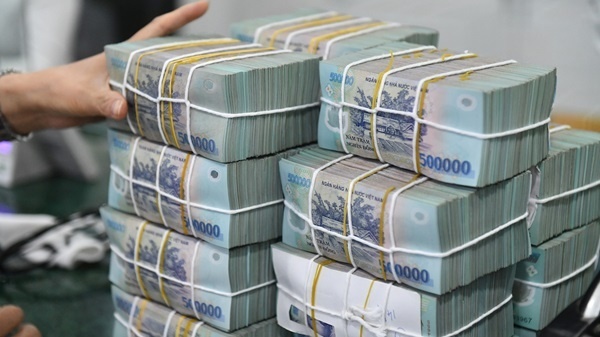On October 2, Military Bank (MB) announced plans to issue 30,000 bonds in a private placement totaling approximately $125 million.
Banks supplementing their capital sources through large bond issuances – Photo: Dau Tu
The term of corporate bonds ranges from 5 to 10 years, and the interest rate is determined by the CEO at each issue stage.
These notes are non-convertible, non-guaranteed and may be issued in one or more tranches.
MB said proceeds from the bond issue will be used to strengthen capital resources, lend to customers in need of financing, or support the bank’s operations and business activities.
As of September 30, the total amount of bonds issued by MB exceeded $2.15 billion.
Techcombank raised about $410 million in bonds last month. Between September 26 and 27, the bank issued five bonds worth more than $404 million. The notes have a term of three years, are scheduled to mature on September 27, 2027, and carry an annual interest rate of 5%.
Proceeds from the bond issue will be used to finance retail and corporate customers, with disbursements expected by December 31st.
Since the beginning of this year, Techcombank has successfully raised 14 bonds, totaling $1.32 billion.
But since the beginning of the year, the bank has repurchased 10 lots of bonds worth more than $830 million.
In August, Southern lender ACB issued two lots of privately placed bonds totaling about $28 million, with first-year interest rates ranging from 6.0% to 6.1% per annum.
Meanwhile, OCB raised $208.3 million by issuing unsecured bonds to investors with a term of two to three years and a fixed interest rate of 5.6% per year.
BaoViet Bank issued 15 million bonds to the public at an annual interest rate of 7.9%. From the second year onwards, the interest rate will be 2.5% added to the base rate.
Similarly, HDBank issued $41.6 million in bonds at the end of August, with an interest rate that was 2.8% higher than the average 12-month deposit rate of commercial banks at the time of payment.
Other banks, such as BIDV and VPBank, have also issued multiple private placement bonds at interest rates of approximately 1 to 1.5 percentage points above the regulated deposit rate, especially to professional securities investors.
Banks have higher costs when issuing bonds, but it helps them balance financing and capital security.
Bonds have a higher cost of capital compared to current 12-month deposit rates of around 5.5-6% per annum. However, recently banks are increasingly paying attention to this financing method.
According to the latest report from the Vietnam Bond Market Association, total corporate bond issuance in the first eight months of this year was about $10.3 billion.
Banking sector bonds led the market with 73% of total bonds, while real estate bonds came in second with just 18%.
FiinRatings noted that bank credit growth has accelerated since June, suggesting a recovery in loan demand and corporate bond issuance next quarter.
As a result, the banking sector is expected to continue increasing bond issuance for the remainder of this year to shore up medium- and long-term funding sources as credit growth gradually improves.
Meanwhile, VIS Ratings predicts that banks will need to issue about $11.8 billion in bonds over the next three years to shore up their funding sources. This resource helps banks maintain capital adequacy ratios.
Bank aims to strengthen financial structure through capital increase
Many banks have announced plans for their upcoming annual general meetings (AGMs), with issues as diverse as dividend payments, capital increases and profit targets at the top of the agenda.
Corporate bond issuance increases rapidly despite no ratings
According to a report by the Vietnam Bond Market Association, total corporate bond issuance in the first four months of this year reached $1.5 billion, including six initial public offerings and 30 private placements.
Corporate bond issue amount more than doubles in 7 months
The Ministry of Finance (MoF) announced on August 5 that companies issued bonds worth VND161.5 trillion (US$6.43 billion) in the January-July period, 2.6 times more than in the same period last year. .



